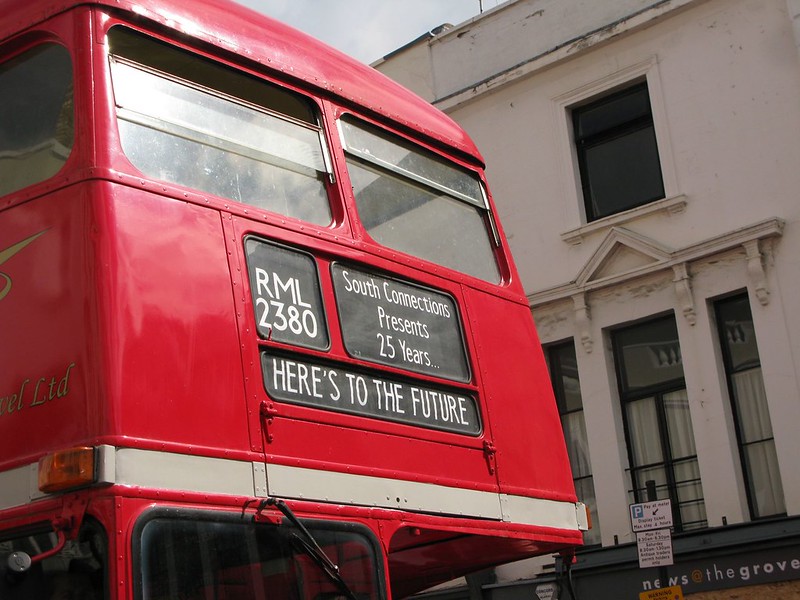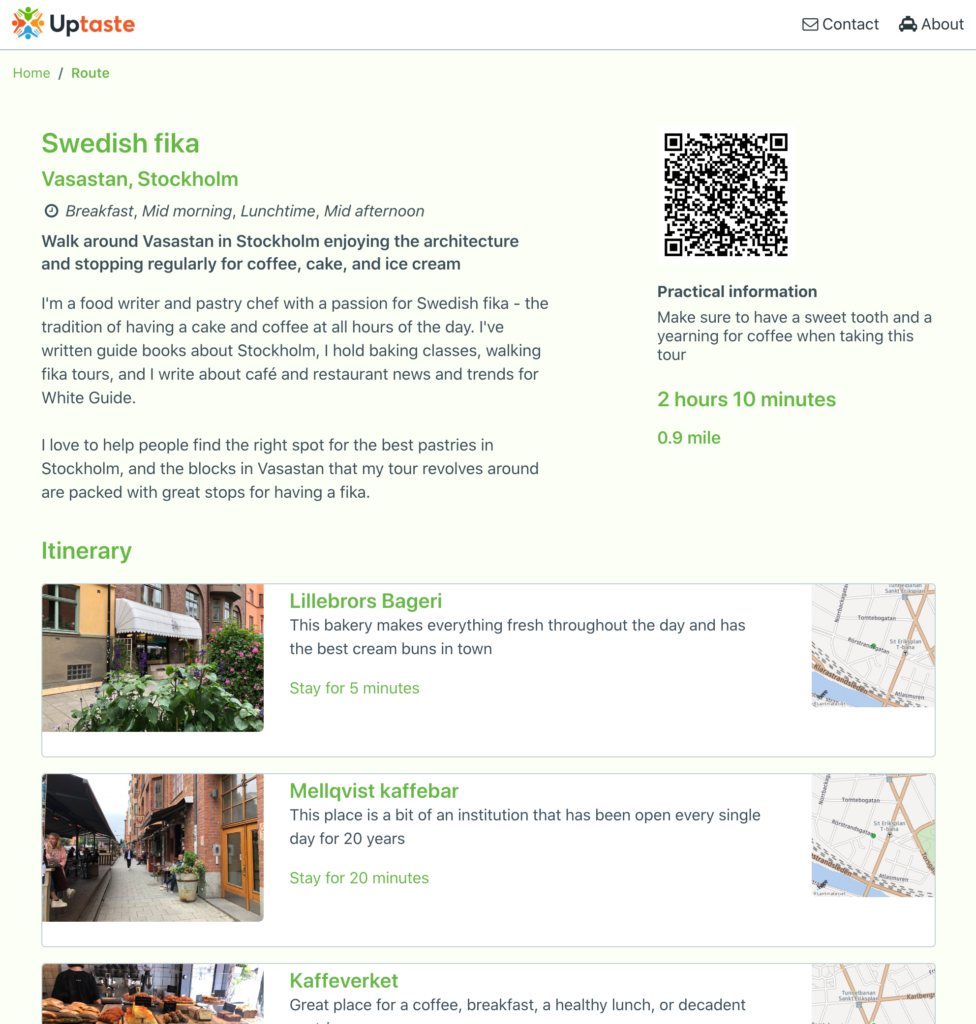
Tours & activities 1995-2030 – technology history & predictions
September 29th, 2020
by Alex Bainbridge
There are very few innovations originated from within the tours & activities sector. Instead, technological change has historically come from outside our sector and was then applied to how we retail, operate and measure the success of our consumer facing experiences.
To clarify what I mean, I group digital innovations into 3 distinct generations. I was at the tip of the spear for all of them:
Web
From 1995 onwards, but picked up momentum 2000 onwards
This enabled Viator (as the first OTA), ecommerce & SaaS reservation systems.
I started to build TourCMS in 2003 with first tour operator customer live in 2004. TourCMS transitioned to the SaaS model in 2007, the first reservation system SaaS in the sector, alongside Rezgo.
Prior to that, in 2001, I was running a tour operator myself and we were the first UK / USA tour operator to stop printing brochures.
“We are the first tour operator – in the UK or USA (I have done some research) to STOP producing brochures – concentrating solely on producing a nice website”
Er, to be a youthful tourpreneur again! You can still read the press from the time!
Social
The social generation started with Tripadvisor 2000 but gained momentum after 2004 (facebook) / 2006 (Twitter)
Social gave us:
- Reviews – e.g. Tripadvisor
- Person to person experiences – Airbnb Experiences, ToursByLocals, WithLocals etc
- Travel blogging & influencers
I was the very first speaker at the very first industry conference about travel blogging, back in 2008. You can read about what I said here.
The end of this generation is bookmarked by a recent failure, my introduction of the Reviewfie (review by selfie). Not a big enough idea to make a breakthrough late in this generation…. although will bring it back into Autoura as a minor feature 😉
Mobile
The iPhone was launched in 2007, however mobile didn’t really impact our sector until 2012-2015
Mobile forced the OTAs to connect to reservation systems via APIs. Prior to that prices were distributed annually, via excel spreadsheet. There was no such thing as availability checking at point of transaction.
Before mobile not checking availability was OK. Digital customers booked weeks in advance, any over booking situation could be dealt with during tour operator office hours and everyone was happy. The consumer was never disrupted.
Mobile reduced the booking window. People were booking the night before for something to do the next day. (Now of course people can book with 30 minutes notice). Overbookings etc became a critical issue. Only connected reservation systems could prevent this.
With TourCMS and Gray Line I spearheaded the first cross-industry reservation system connectivity projects – For Expedia, HotelBeds, GetYourGuide, TourRadar & Veltra we were the first reservation system they connected to.
Historical note: Viator were the first OTA to launch their API functionality.
What is next?
That brings us to today. There hasn’t really been a new technology introduced to our sector for a decade or more. Sure, there have been optimisations & efficiencies, but nothing that substantially alters the sector like the three prior generations just outlined.
My prediction is that digital product delivery is what comes next. Unlike prior technology generations that changed the retail experience (but left the product as a mainly human operated concept), changing the product alters everything. This includes how OTAs operate, to how money flows, to how consumers discover and book experiences, to where the power lies.
What is digital product delivery?
Audio tours
Been around for a while, high production quality, fixed route, fixed duration experiences
AI tour guides
Where there is at least a conversational user interface (rather than just an audio tour). e.g. Sahra is an AI tour guide as you can talk to her and she talks back
Autonomous vehicle sightseeing
Take an auto-tour in a self-driving car. Written about this so much, previous coverage is on the Autoura press page
Clue based navigation games / other wide games
e.g. Questo / Pokemon Go
Augmented reality (AR) tours
e.g. City Guyd
Robot to person (R2P) sightseeing
See below
Connected trip
The autonomous vehicle becomes the glue, rather than the experience itself. e.g say you talk to your digital concierge (e.g. an Alexa style gadget in your hotel room)….. and you fancy going to a restaurant, then the theatre…… the autonomous vehicle takes you from your hotel, to the restaurant, prompts you when you have to leave, takes you to the theatre….. then to a late night bar, then back to your hotel. The airlines have a version of the connected trip in their visions but I prefer the in-destination connected trip as an immediate first step.
R2P
The concept of amateur tour guides never really succeeded vs professional tour guide marketplaces.
In 2011 I listed the 27 startups giving this a go. At that time I wrote:
So let’s take one step back. These marketplaces may have got the wrong SOLUTION but are absolutely addressing an existing consumer PROBLEM. Consumers want in-destination experiences rather than generic bus tours. They want memories. They want stories they can share with friends and family on their return. They want something a little out of the ordinary.
I updated this in 2013 with a list of the key issues that these marketplaces faced:
- Tours are a discretionary purchase – person-to-person marketplaces tend to have tours without assets, so end up being walking based tours or products using public transport. In the tour world, day tours without assets are even more susceptible to “buy when you get there” or “organise your own trip”, than day tours with assets (such as white water rafting where, err, you need the rafts!).
- The provider has to provide the tour – Unless the provider wants to become a full time local tour operator, they are unlikely to wish to be booked out more than a handful of times per month, over the longer term
- Tours and activities are moving rapidly towards bookings on the day via mobile devices – Amateurs who have other jobs (and incomes) can be less flexible than regular local tour operators (who will have already planned to run their tours regardless of any last minute bookings).
Turns out AI can solve this with sightseeing robots!
This realisation hit me last week when I was looking at this pastry tour in Stockholm, designed by a local pastry chef:
Isn’t that what P2P marketplaces were all about, locals designing and offering amazing local experiences? However our AI based take on it is scalable, consistent, and more importantly, here in 2020.
R2P is not going away. If you are 30 today, you will spend 25 years of your next 30 year career working in the sightseeing industry designing R2P experiences. Might as well get on board now and become your local “go to” expert for when they are mainstream.
Human tour guides will remain needed but will retreat to luxury or be incorporated into longer R2P experiences. No doubt in my mind that R2P & AI tour guides will take the mainstream market.
Terminology: R2P vs AI tour guide
I have made up the terms R2P and AI tour guide. On the surface they appear the same but I see them as different.
An AI tour guide is a character lead tour. e.g. Sahra is an AI tour guide – you can talk to her, she talks back. She is a singular tour guide with a singular perspective on the humans she interacts with.
A R2P sightseeing experience is where it is the local expert’s tour, just the delivery mechanism is via robot.
In reality, with what we are doing, we are both AI tour guide & R2P. However I can see where a service could be R2P only, or AI tour guide only, hence understanding why and how they are different is useful.
Final thought
There is an entire generation of travel industry executives who have only seen incremental rather than substantial change (because nothing has changed much in the last decade).
With the previous retail changes created by the first 3 technology generations, if you adapted a little later than your near competitors, you were still OK. I am not sure this will be the case with digital product, the longer you leave it, the harder it becomes to shift over as the further ahead the (new) incumbents will be.
In this era where many companies have reduced their project teams down to the bone, I can see this transition being left to another time….. however I realised recently that we don’t need to transition tour operators (unless they want to), we can scale up using tour guides and travel writers….. rather than their employers.
Side note on our progress
The Uptaste website is a 40 tour, 35 city, 14 country capability demonstration. Next focus is more consumer experience testing. Then scale up. COVID not making life easy (personally or professionally) however forcing me to sit at home writing code, means we can deliver on this digital product outlined above quicker than we first thought 😉

This content is protected by copyright. Link sharing is encouraged but duplication and redistribution is illegal



If you like to comment via LinkedIn, here is the the thread https://www.linkedin.com/posts/alexbainbridge_tours-activities-1995-2030-technology-activity-6716710009574588416-ZooF
Thank you, Alex, for this tour. Your career has been an inspiration to the industry. The covid effect, in the long run, will probably accelerate Autoura in the US as recreational vehicle rentals were the next big thing this summer. I do not follow how the pandemic has generally becalmed leisure products, but I imagine it will be worse than 2009–2010.